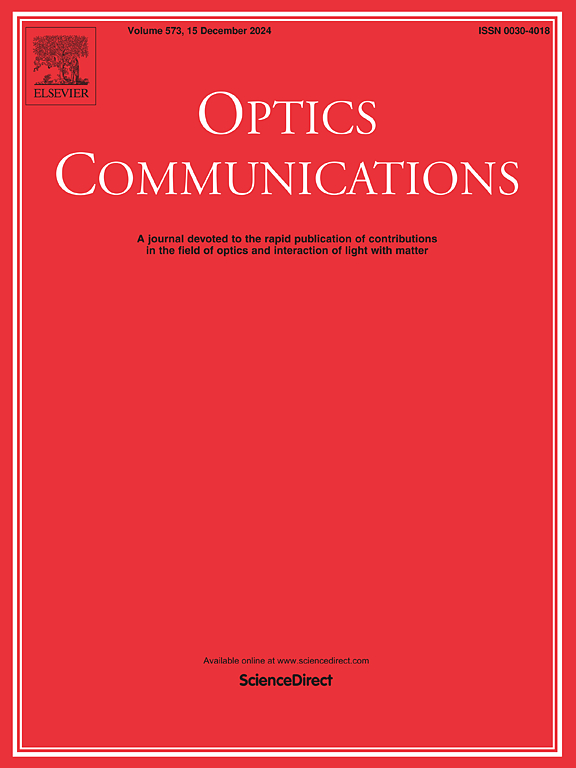Filamentation characteristics in the transition from cylindrical vector to circularly polarized vortex femtosecond pulses
IF 2.2
3区 物理与天体物理
Q2 OPTICS
引用次数: 0
Abstract
This study investigates the influence of polarization on the filamentation characteristics of femtosecond vector and vortex laser pulses. By using a quarter-wave plate (QWP) and a q-plate to vary the polarization distribution of femtosecond laser beam, we transform the beam from a cylindrical vector to a circularly polarized vortex beam. This transition enables precise control over key parameters, including the on-axis maximum intensity and spectral broadening of the generated supercontinuum. As the QWP angle increases from 0° to 45°, we observe a decrease in both the maximum filamentation intensity and spectral broadening. These parameters exhibit periodic variations as the QWP angle is further increased beyond 45°. Furthermore, circularly polarized vortex beams exhibit delayed filamentation onset, shorter filament length, and lower intensity compared to the linearly polarized beams. These findings highlight the critical role of polarization in modulating filamentation dynamics, offering the way for enhanced applications in air lasing, waveguides, and supercontinuum generation.
求助全文
约1分钟内获得全文
求助全文
来源期刊

Optics Communications
物理-光学
CiteScore
5.10
自引率
8.30%
发文量
681
审稿时长
38 days
期刊介绍:
Optics Communications invites original and timely contributions containing new results in various fields of optics and photonics. The journal considers theoretical and experimental research in areas ranging from the fundamental properties of light to technological applications. Topics covered include classical and quantum optics, optical physics and light-matter interactions, lasers, imaging, guided-wave optics and optical information processing. Manuscripts should offer clear evidence of novelty and significance. Papers concentrating on mathematical and computational issues, with limited connection to optics, are not suitable for publication in the Journal. Similarly, small technical advances, or papers concerned only with engineering applications or issues of materials science fall outside the journal scope.
 求助内容:
求助内容: 应助结果提醒方式:
应助结果提醒方式:


